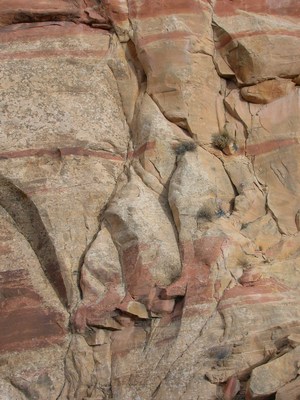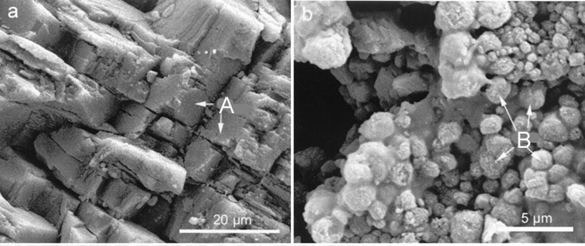Bacteria build dikes
Miranda van Wijngaarden-van Rossum
Site of the project:
GeoDelft
Stieltjesweg 2
2628 CK Delft
start of the project:
September 2007
In February 2008 the Interim Thesis has been appeared and a
presentation has been given.
Presentation
at NWO Bessensap Nemo, Amsterdam, May 26, 2008.
The Master project has been finished in July 2008
by the completion of the Masters Thesis and a final presentation has
been given.
For working address etc. we refer to our alumnipage.
Summary of the master project:
For large buildings a good foundation is needed. In various parts of
the Netherlands the surface of the earth consists of sand. It is well
known that sand is not alway a good foundation for heavy structures.
In the subsurface it happens that micro-organisms transform sand into
sandstone.
These micro-organisms glue the sand grains together by the formation
of calcite. In nature this takes several centuries since feeding
substances are scarce deep in the subsoil. The idea is to inject
feeding substances for the micro-organisms in these layers, which
speeds up the formation of sandstone.
This leads to a cement-like structure of the sand layers. Another
appllication is to contruct 'bio-dikes', where these bacteria with
feeding substances are used to strenghten weak dikes. To keep dikes
strong is very important in the Netherlands, where most of the land is
below sea level.
In this project we shall make a mathematical model for the injection
of bacteria with food. The injection is done by using a high
pressure. This leads to a convection-diffusion equation.
The growth of bacteria and calcite (CaCO3) is modelled by a
reaction-transport equation.
The model consists of a system convection-diffusion-reaction
equation. The flow is convection dominated, which implies that the
finite element method should be adapted such that there are no
wiggles in the solution. The reaction-terms lead to a stiff system of
ordinary differential equations, so a suitable time integration
method should be used.
Sandstone formation

SEM photomicrographs of samples subjected to Myxococcus
xanthus-induced calcite precipitation.


Contact information:
Kees
Vuik

Back to the
home page
or the
Master students page of Kees Vuik


![]()
![]()